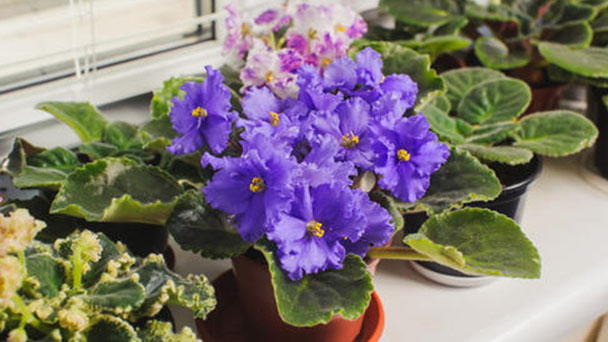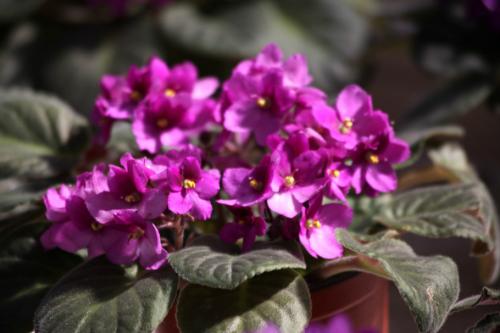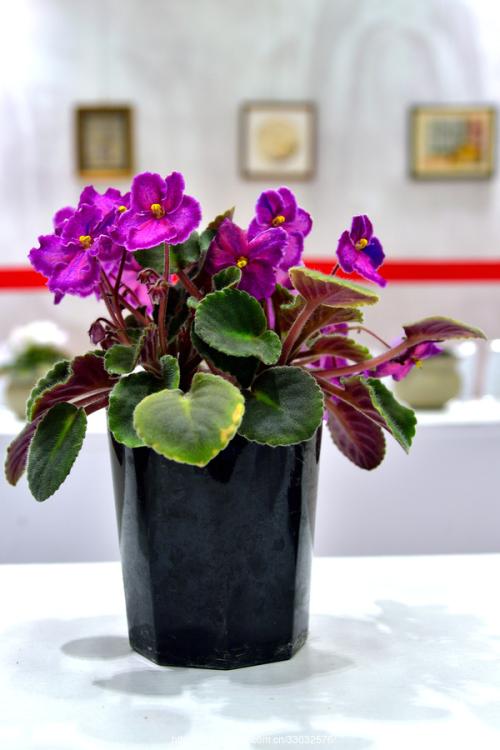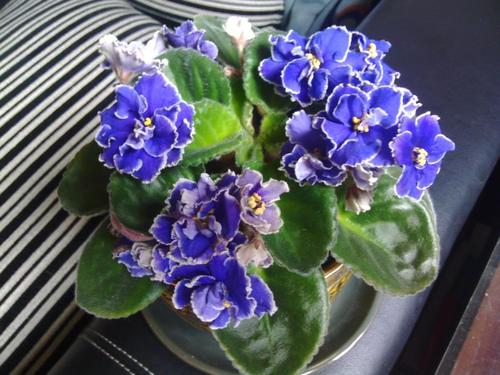How to grow and care for African violets
Written by Maggie
Feb 07 2021

African violets, Latin name :(Saintpaulia ionantha Wendl), is a perennial herb of the Gesneriaceae family, native to the tropical region of East Africa, small and colorful plants bloom all the year-round. It is a potted flower suitable for indoor cultivation. So how to grow African violets? How to care for African violets? The following we will explain to you about the growth of African violets and caring tips.

Growing African violets
Growth habits of African violets: African violets like warm, humid and semi-overcast environments. They are afraid of strong light and high temperatures in summer. Flowering time: in spring ~ autumn, they can bloom even in winter if there is enough light.
Common cultivars: large flowers, single, semi double, double, variegated, purple, white, blue, pink and two-color, etc. The most cultivated varieties are single - petal snow prince. The following are details of growing African violets.
- 1. Temperature requirements: the optimal growth temperature is 16 ~ 24℃, 18 ~ 24℃ from April to October, and 12 ~ 16℃ from October to April of the following year. The temperature should not exceed 30℃ in the daytime, the high temperature is not good for the growth of African violets (I do not know whether it is wool ~). If the outdoor temperature exceeds 30℃ in summer, the water should be given timely shading.
- 2. Lighting requirements: African violets need shade in summer with green leaves; Winter is full of sunshine, to bloom constantly; Rain and snow combined with supplementary light are very beneficial to the growth and flowering of African violets. If the light is insufficient, it will flower less and light, even only long leaves do not blossom; If the light is too strong, it will cause the phenomenon of yellow leaves, dry coke. It can be placed in the light bright and no direct sunlight maintenance.
- 3. Humidity requirements: in the process of cultivation, we should keep high air humidity, appropriate watering, do not make too wet, so as to avoid stem and leaf rot. The difference between water temperature and air temperature should be less than 5℃, otherwise, there will be a large number of yellow spots on the leaves.
- 4. Fertilization: Every 7 to 10 days in the growing season of African violets applied a thin liquid fertilizer or compound fertilizer. The nitrogen content of fertilizer should not be too much, otherwise the leaves will grow luxuriant and few flowers.
- 5. Summer care: keep it in a ventilated and cool place in summer to avoid hot and humid environments and hot sun exposure. At ordinary times water should not be too much, to wait for the basin soil a little dry again. Basin soil water is often the main cause of plant rot.
- 6. Winter care: The ambient temperature in winter shall not be lower than 10℃, otherwise it is vulnerable to freezing damage. The relative humidity of 40 {bf} ~ 70 {bf} is more appropriate. The soil is too wet and easy to rot roots. The air is dry and the leaves lack luster. Avoid sharp rises and falls in temperature, or the plant will die easily.

How to care for African violets
When caring for African violets, it needs suitable temperature and light. African violets are free from high temperature. The optimum growth temperature is 18~24℃, which is lower than 16℃ and grows slowly. The leaves will harden and sag, and the leaves under 10℃ will suffer from freezing damage. It needs shade in summer. When indoor illumination is insufficient in winter, we can use fluorescent lamps to supplement illumination.
Watering and fertilizing. Watering should not be too much, appropriate in the morning before 10 o 'clock, 10 days or so during the growth of fertilizer, avoid applying too much nitrogen fertilizer, do not stain the leaves.
Cultivation medium and basin changing. Use loose, fertile, neutral or slightly acidic culture soil. Pots should be gradually changed from small pots to large pots according to their growth.
Pest control. The main diseases are root rot, crown rot and mildew. The main pests are aphids, mites, thrips, nematodes. Once the disease and insect pests are found, we should spray the relevant agents in time.

Latest Updated
- Benefits of Bugleweed - 7 Science-backed Health Benefits
- Bugleweed Dangers & Side Effects - Is It Poisonous?
- How to Plant Evergreen Trees - What You Should Know
- When to Plant Evergreens - Grow Guide for Evergreen Trees
- 12 Wonderful Evergreen Shrubs for Your Garden
- 12 Popular Evergreen Plants with Pictures for Beginners
- When And How To Prune A Lilac Bush Like a Pro
- How to Grow & Care for Lilac Vine (Hardenbergia Violacea)
- Japanese Lilac Tree (Syringa Reticulata) Care & Propagation Guide
- Shumard Oak Pros and Cons - What to Know
Popular Articles
- Winter maintenance of Antirrhinum Majus
- How to Grow Terminalia Mantaly Tree
- How to Grow and Care for Crossostephium Chinense
- How to grow Antirrhinum Majus in spring
- Peristeria Elata (Dove Orchid) Profile: Info & Care Guide
- Underwatered Snake Plant (Sansevieria Trifasciata) - Signs And How To Fix
- How to Care for Brazilian Jasmine Plant (Mandevilla Sanderi)
- How to Grow & Care for Graptopetalum Purple Delight in Summer
- Rosa Chinensis (China Rose): Plant Growing & Care Tips
- How to Care for Baby Sun Rose (Aptenia Cordifolia)